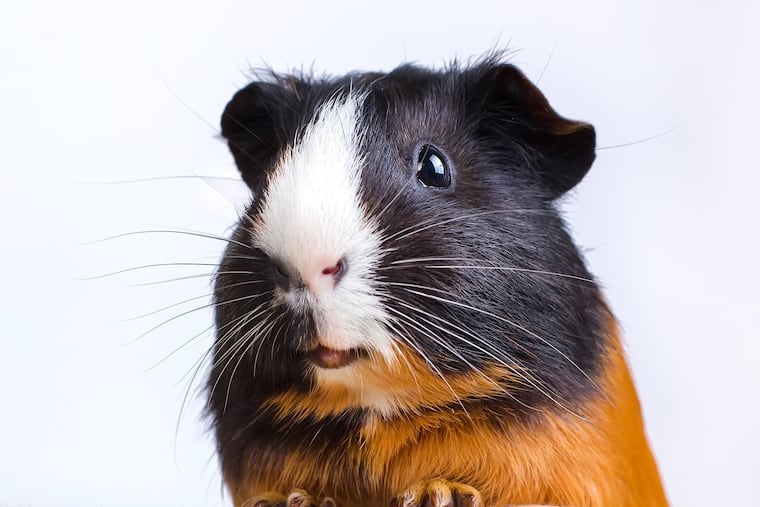Can guinea pigs help treat pneumonia?
In remote Peruvian villages, tucked in the Andes mountains, traditional healers use guinea pigs to diagnose and treat pneumonia.

In remote Peruvian villages, tucked in the Andes mountains, traditional healers use guinea pigs to diagnose and treat pneumonia. Admittedly, this sounds strange, perhaps even ludicrous. But, use caution when dismissing culturally foreign medical practices, as learning about them can provide valuable lessons.
This healing practice is called shoqma. It involves rubbing a guinea pig over a patient’s body. In cases of pneumonia, the healer prescribes that the guinea pig sleeps on the chest of their patient, usually a child. Following the guinea pig-to-human contact, healers analyze the furry rodents for diagnosis and treatment. This analysis differs in varying geographic areas. Sometimes, the guinea pig is left alive, but more frequently the healer cuts the animal open and analyzes its organs, blood, and bones. When the patient gets better, the Andean belief is that the guinea pig absorbed the illness.
Does it work? We don’t really know because there are no research data to support or condemn the practice. Anecdotal evidence may exist, but it is not in mainstream medical journals. What is known is that in Peru, deaths due to acute respiratory infections, including pneumonia, are the third leading cause of mortality in children under 5 years, and the incidence of pneumonia in Peru continues to increase. The National Epidemiology Center of Ministry of Health of Peru registered more than 30,000 cases of pneumonia in the first six months of 2018, the highest figure in the last five years. Absent from these statistics is any mention of guinea pigs. Rather, causes of the high incidence of pneumonia in Peru are attributed to poverty, poor access to care, and lack of education.
Here’s where the valuable lesson arises. We are not so different from our Andean counterparts. Like Peru, the U.S. morbidity and mortality rates from pneumonia are high. It is estimated that about 900,000 Americans are diagnosed with pneumococcal pneumonia each year. There are more than a half-million emergency room visits by people diagnosed with pneumonia, and more than 50,000 patients die each year from pneumonia. Absent from these statistics is any mention of traditional adjunct therapies, such as chicken soup. Rather, similar to the Andes, poverty, poor access to health care, and lack of education are some of the same reported reasons why so many people suffer with pneumonia here in the United States.
According to the American Lung Association, pneumonia is often preventable. There are basic steps to take to reduce the incidence of pneumonia. Here are some suggestions to reduce your risk of getting pneumonia.
1. Wash your hands. Hand hygiene is a simple and effective way to prevent the spread of infection. Wash your hands frequently, especially after blowing your nose, going to the bathroom, and before eating or preparing foods. The very young and the very old are most vulnerable and may not be able to do this themselves. Remind and assist them with hand-washing.
2. Get your vaccines. Get a flu shot. Having the flu can lead to pneumonia, so preventing the flu is a good way to prevent pneumonia. Flu shots are widely available – usually from October until March. They are offered from primary care providers, and local pharmacies. Employment and educational settings often run flu shot clinics, too. With insurance, flu shots are free of charge. Even if there is a minimal charge, it is much less than the cost of pneumonia care.
Find out whether you are candidate for the pneumococcal vaccine. The American Lung Association recommends that children younger than age 5 and adults over age 65 get vaccinated against pneumococcal pneumonia, a common form of bacterial pneumonia. The pneumococcal vaccine is also recommended for all children and adults who are at increased risk of pneumococcal disease due to other health conditions.
3. Don’t smoke. Tobacco damages your lungs’ ability to fight off infection and increases the risk of getting pneumonia. Smokers are considered to be at very high risk for pneumonia and are encouraged to get the pneumococcal vaccine in addition to tobacco cessation.
4. Eat a healthy diet, exercise and be sure to get plenty of rest.
Now what about that guinea pig? In Peru, the guinea pig, or cuy, is an important part of Andean life. It is believed to have spiritual and healing powers that are used for many diseases. It is considered a delicacy by many Peruvians. While it may not cure, it could provide much needed nurturing and support to the sick. Until it is researched, we cannot really condone or condemn the practice. I would argue that no matter what, shoqma does not benefit the guinea pig. Then again, chicken soup does not benefit the chicken.
Sherri Becker, RN, DNP, is an instructor of nursing at Gwynedd Mercy University.